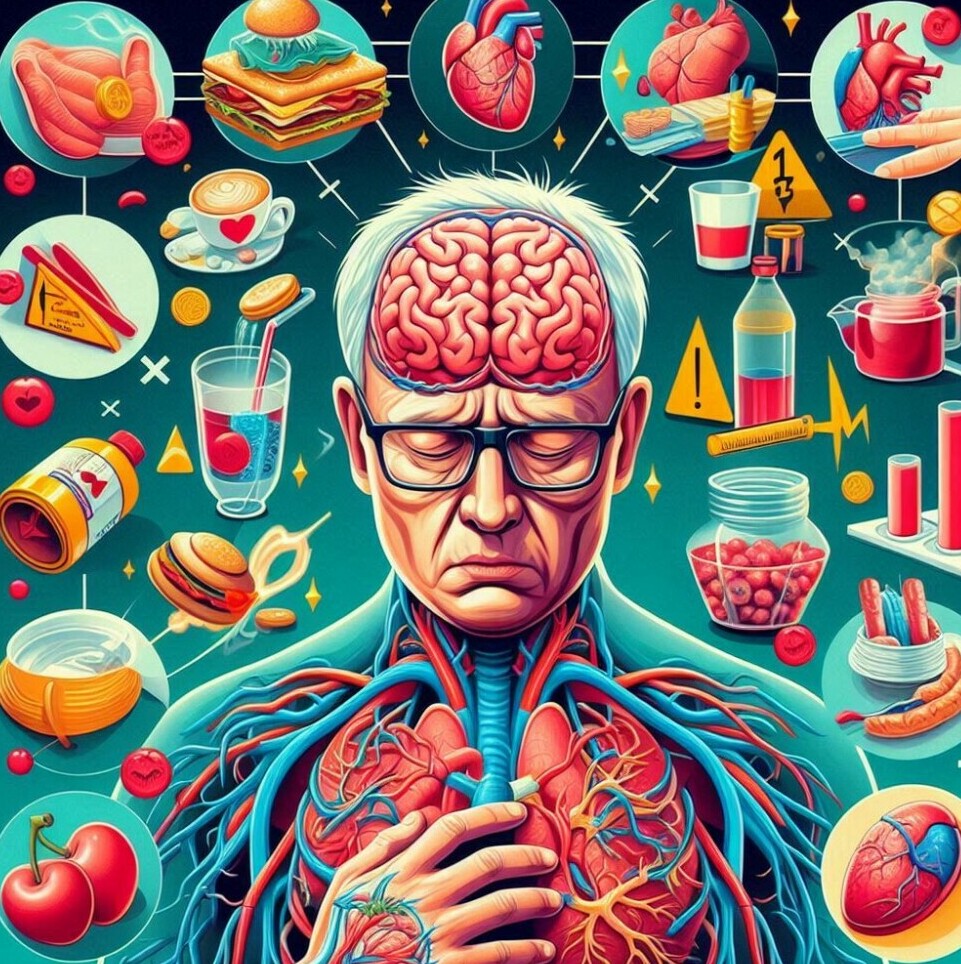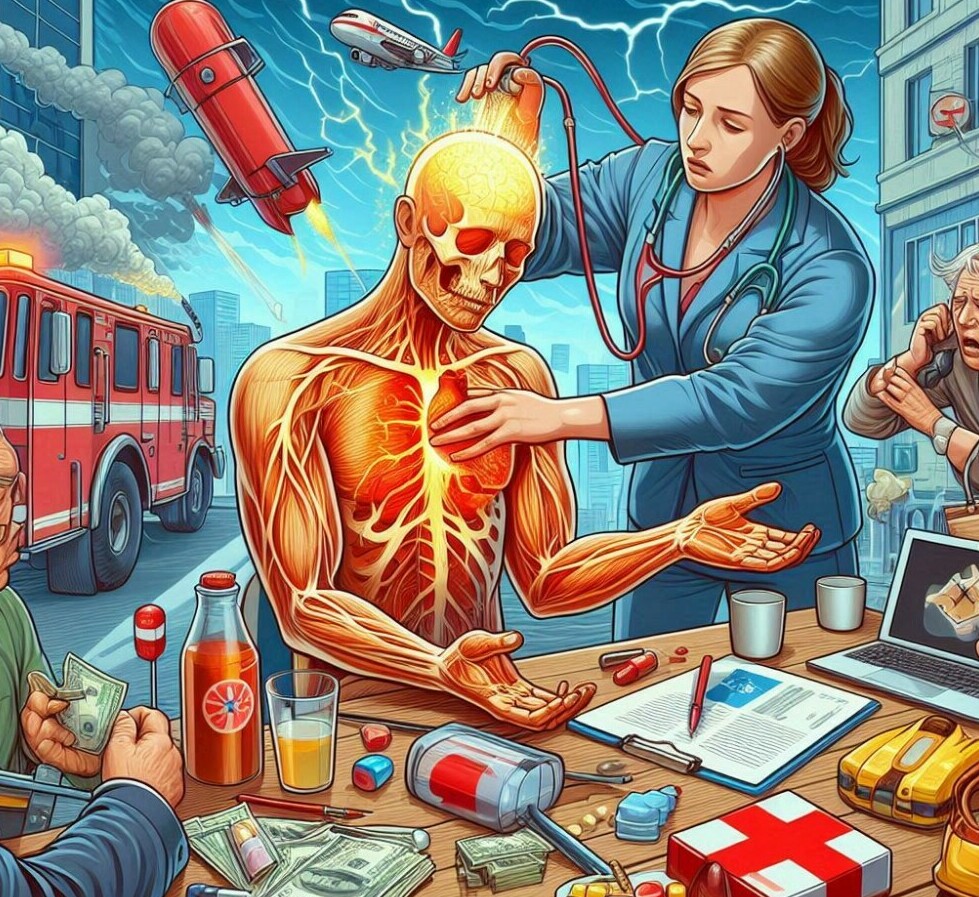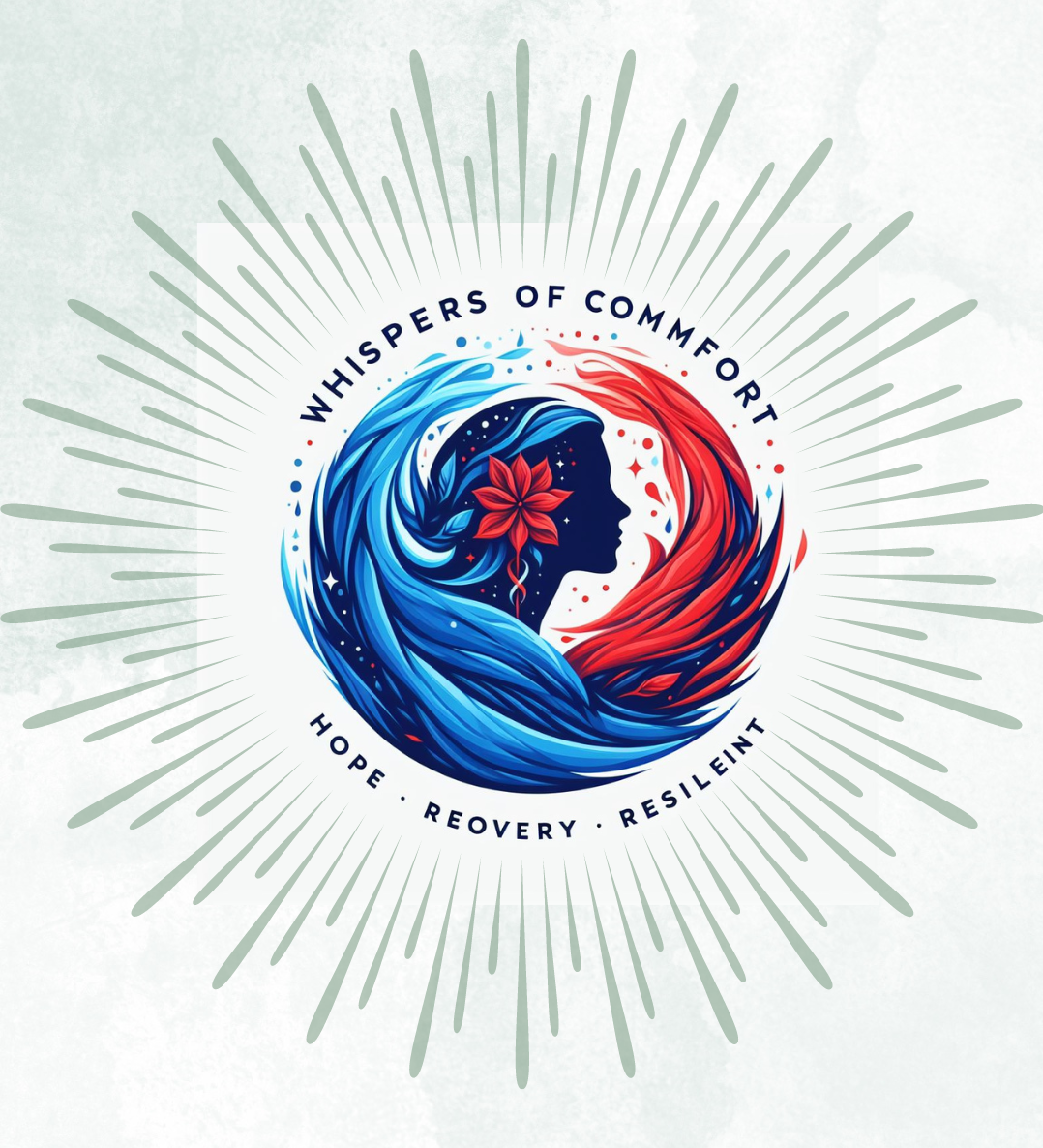
Recognizing the early symptoms of stroke is crucial for preventing long-term damage and potentially saving lives.
Think of a stroke as a ‘brain attack’—this is when blood flow to an area in the brain gets cut off, cells begin to die, and functionalities controlled by that brain area are lost. It’s not just about losing functions, but about saving them by acting swiftly.
If you’re wondering about the anatomy of a stroke and how it develops, let me explain. Just like a heart attack, a stroke can creep up silently until it manifests itself through various alarming signs. Blocked arteries or leaking blood vessels are the usual culprits. When these issues disrupt the blood supply to the brain, it can lead to noticeable symptoms that shouldn’t be ignored.
Now what should grab your attention? The common pre-stroke signs don’t discriminate; they hit both females and males alike. Slurred speech, sudden confusion, one-sided weakness or numbness, and unexpected severe headache are just a few of the red flags. These signs can spell out trouble, and knowing them might give someone the golden hour – the window of time where treatment is most effective.
I’m here to tell you that recognizing these signs can quite literally be the difference between life and impairment. Timely intervention not only improves survival rates but also significantly reduces the risk of long-term disability. But sometimes, these warnings come in the form of a less severe episode known as a Transient Ischemic Attack (TIA), or what you might call a ‘mini-stroke’.
Let’s shift gears and get to know TIAs better because understanding this condition is just as crucial as knowing major stroke signs. This brings us to the next part, where I’ll illuminate how a mini-stroke can serve as an urgent wake-up call, and why you should never shrug off its fleeting nature. Pay close attention, because knowing this could save a life – maybe even your own.
Mini-Stroke (TIA): A Warning Signal Not to Ignore
I’m going to kick things off by demystifying something called a Transient Ischemic Attack (TIA), or what you might know as a ‘mini-stroke’. Here’s the scoop: although it’s called ‘mini’, there’s nothing small about the warning it provides. A TIA is a temporary blockage of blood flow to the brain, serving as a red flag that something’s not right.
Now, let’s clear up some common confusion. While the symptoms of a TIA and a full-blown stroke may look similar, there’s a crucial distinction. Symptoms of a TIA are temporary, often lasting just a few minutes. Conversely, a stroke has longer-lasting consequences because the blood flow to the brain is interrupted for an extended period, potentially causing permanent damage.
Recognizing TIA symptoms is like having a crystal ball for your health; it can indicate a heightened risk of a full stroke in the future. That’s why paying attention to sudden headaches, dizziness, or difficulty speaking—even if they disappear quickly—is pivotal. It’s your body’s way of sounding the alarm.
If you experience a TIA, seeing it as a wake-up call is critical. It’s time to chat with your healthcare provider about stroke prevention, including lifestyle changes like adjusting your diet, increasing exercise, or managing blood pressure. Because, believe it or not, if a TIA goes unchecked, the risk of experiencing a full-scale stroke climbs substantially.
Gender Specifics: Recognizing Stroke Signs in Women and Men

It’s not just a health issue; it’s a matter of life and quality of life. Strokes don’t discriminate by gender, but the warning signs sometimes do. We’re going to look at how males and females exhibit different pre-stroke symptoms, underlining the need for tailored awareness.
Women may experience a stroke very differently than men. While both sexes share common signs like sudden numbness or weakness, especially on one side, and difficulty with speech or comprehension, women often report unique symptoms. These can include sudden dizziness not linked to vertigo, an unexplainable sense of ‘uneasiness,’ nausea or vomiting, seizures, hiccups, or even general weakness.
For men, while the more typical signs such as facial drooping, arm weakness, and speech difficulty are prevalent, they may also express certain symptoms more intensely. Additionally, a sudden headache with no apparent cause can be a male-specific warning of a stroke, alongside confusion or changes in mental status.
In my opinion, this isn’t just a health conversation; it’s also about education and empowerment. By understanding these divergences, we can personalize our approach to stroke awareness, ensuring everyone is better equipped to detect early warning signs. Don’t underestimate ‘mild’ or ‘unusual’ symptoms – they could be pivotal in forewarning a stroke.
Lifesaving Knowledge: Responding to Pre-Stroke Symptoms

So, you’ve learned about the pre-stroke symptoms and how they may differ between genders. Now, let’s talk about the most critical part—responding when you spot these warning signs. Quick action can make a huge difference, potentially saving a life or preventing long-term disability.
If you observe someone experiencing what could be a pre-stroke sign, your immediate response should be to call emergency services. People often hesitate, thinking the symptoms might pass, but it’s crucial to err on the side of caution. Time is brain, as the saying goes in stroke care, and the faster the treatment, the better the chances for recovery.
Education about the F.A.S.T. acronym is invaluable. Remember, F for Face drooping, A for Arm weakness, S for Speech difficulty, and T for Time to call 911. This simple tool is your go-to during a suspected stroke event, guiding you on what to look for and the urgency needed.
Finally, for those who have already experienced TIA or minor stroke symptoms, it’s a wake-up call to work closely with healthcare providers on a longer-term health plan. Lifestyle changes, medication management, and regular check-ups can drastically reduce the risk of a future stroke.
In the end, awareness is key. Understanding pre-stroke symptoms, staying vigilant, and reacting swiftly isn’t just a personal concern—it’s a collective responsibility we hold towards ourselves and our communities. So, let’s make this knowledge widespread, embrace the preventative measures, and stand ready to act when it matters most.
Prompt recognition and immediate medical attention are essential for minimizing brain damage and improving recovery prospects. Understanding, identifying, and being vigilant and informed—acting quickly can save a life and ensure better health outcomes for the individual concerned.
Kindly leave your comments and experiences below.
Simplified. Turn YOUR Passion, Hobby or Interest into YOUR Success Story! Join Wealthy Affiliate today: https://www.
**Here’s a little transparency: Our website contains affiliate links. We may receive a small commission if you click and make a purchase. Don’t worry, as there’s no extra cost to you. It’s a simple way to support our mission of bringing you quality content.
Follow me on social media!

Hi there
I like that your article provides valuable information on recognizing pre-stroke signs and symptoms, highlighting the importance of early detection to prevent long-term damage.
It explains the similarities and differences between a full stroke and a Transient Ischemic Attack (TIA), emphasizing the critical need for immediate medical attention. The piece also discusses gender-specific symptoms, making it a comprehensive guide for stroke awareness.
How can individuals best prepare themselves to act quickly in case they or someone around them shows pre-stroke symptoms?
Hi Troy,
I appreciate your thoughtful contributions to this article.
Individuals familiarizing themselves with the FAST acronym (face drooping, arm weakness, speech difficulties, and time to call emergency services) remains the best preparation strategy for recognizing pre-stroke symptoms and minimizing their impact.
First aid courses focused on stroke recognition should also be encouraged across all segments of society. Keeping medical emergency numbers handy and educating family and friends about the signs and importance of prompt action are also very important.
Furthermore, the need for vigilance and preparation cannot be overstated.
Thank you for your insights and for finding the article impactful.
I wish you all the best.
Makinde
Thank you for such an informative post on recognizing early stroke symptoms and the importance of quick action. The detailed explanation of pre-stroke signs and the distinction between TIA and full-blown strokes are incredibly helpful.
Appreciate your efforts in raising awareness about such a critical health issue. Looking forward to learning more!
-Allie 🙂
Hello Allie,
I appreciate your contributions to the article.
Raising awareness about such a critical and challenging health issue is important, especially given the distinction between TIA and a full-blown stroke.
I am glad you found the article helpful and informative.
Thank you for your feedback. Stay tuned for more posts on health and wellness.
All the best,
Makinde